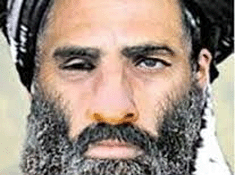Ghazi Force in focus after Wah bomber identified

ISLAMABAD: Amidst intelligence reports that the Lal Masjid-linked Ghazi Force was flexing its muscles to carry out some major acts of terrorism in Rawalpindi and Islamabad by using its human bombs, the investigators have identified the suicide bomber who had blown himself up at a police picket at Wah on January 20, 2015 as Kausar Ali, a former student of the Lal Masjid-run Jamia Fareedia.
According to those investigating the case, the bomber was on a suicide mission and riding a Rawalpindi-bound bus when intercepted during a routine checking at a police picket on the GT road near Mughal garden area of Wah. As ASI Babar tried to body search the 25-year old suspicious man after taking him off the bus, he shouted “Get away from me” and hurled a hand-grenade on the policemen. The grenade missed the target and exploded a few meters away, injuring three members of a family – Jamrud Khan, Mehmood Khan and Naseem Bibi. As the human bomb rushed to nearby fields, policemen fired warning shots to stop him. The bomber ignored the shots and kept running towards Jhatla village near Wah. As policemen closed in on him and were about to grab him, he blew himself up in the fields.
A bomb disposal squad was called from Rawalpindi to defuse explosives which were wrapped to the body of the bomber, who has been identified as Kausar Ali, although half of his face had blown up in the blast. Rawalpindi City Police Officer Humayun Bashir has already confirmed that the bomber was Lal Masjid-linked and travelling to Rawalpindi on a possible suicide mission to target some important installation or figure. He said the Islamabad police had intelligence reports of the transportation of human bombs to the twin cities by TTP-linked banned terrorist organisations, especially the Ghazi Force. Information collected by the police has confirmed that Kausar used to be a student of the Lal Masjid-run Jamia Fareedia for boys in 2007 when ‘Operation Silence’ was carried out against the followers of fanatic cleric brothers – Maulana Abdul Rasheed Ghazi and Maulana Abdul Aziz Ghazi.
The investigators had arrested seven people to find out the identity of the human bomb, including his two real brothers, who were taken into custody from their native village, Jabbi Kasran in Fateh Jang – the tehsil headquarters of the Attock district. Kausar has left behind a widow, three brothers and a sister who live in Faisalabad. His mother told the police that Kausar had left home three months ago and had not been in contact with the family, including his wife, since then. Another brother of Kausar is in the Attock jail for his involvement in a murder case. Two of his arrested brothers are construction workers while the third one is a rickshaw driver. It was almost three weeks before Kausar Ali exploded himself that the country’s premier intelligence agency had warned the Ministry of Interior in a January 1, 2015 communiqué that Maulana Abdul Aziz poses a serious security threat to the law and order situation in Islamabad. The letter titled ‘Activities of Maulana Abdul Aziz’, said that the “Lal Masjid mafia” has links with several anti-state terrorist groups and is currently reorganising the Ghazi Force, which was named after Maulana Abdul Rasheed Ghazi to avenge ‘Operation Silence’. The report highlighted the links between the Taliban and the Lal Masjid cleric, stressing the importance of the TTP choosing Maulana Abdul Aziz as a representative of the committee that was formed to hold peace talks with the Sharif government on their behalf.
A day after Kausar Ali exploded himself at Wah, the Standing Committee of the Senate on Interior was informed on January 21, 2015 in a report submitted by the Islamabad police that after the Peshawar school massacre, Mullah Sabir and Mullah Rahim have established contacts with Maulana Aziz in a bid to revive the Ghazi Force and to target his critics. “Sabir and Rahim command dangerous terrorists who are part of a group of fidayeen which had carried out 21 suicide bombings in Rawalpindi and Islamabad”. Therefore, the Islamabad police are hunting those Lal Masjid-linked students who had been arrested in July 2007 at the time of the military operation and are suspected of regrouping to activate the Ghazi Force.
The Ghazi Force was launched by a former student of Jamia Fareedia, Maulana Niaz Raheem alias Bilal, along with Fidaullah and it was first headquartered in the Orakzai Agency of the Federally Administered Tribal Areas. After becoming the ameer of the TTP in August 2009, Hakeemullah Mehsud had facilitated the group to establish its training camps in Dargah Mandi area of North Waziristan and Guljo area of Hangu, Khyber Pakhtunkhwa. The intelligence agencies have so far identified 198 suspected militants who are working for the Ghazi Force. Some 111 suspects linked to the Ghazi Force are being kept under surveillance. The police are interrogating 53 suspects who are believed to be affiliated with the Ghazi Force and used to visit the Lal Masjid. Much before ‘Operation Silence’ was launched, Lal Masjid had become known to the world as a center of radical Islamic learning, housing several thousand male and female students in adjacent seminaries picked from hard line students from Khyber-Pakhtunkhwa and the tribal areas where support for the Taliban and al-Qaeda was quite strong at that time. Elements from al-Qaeda-linked jehadi and non-state actor groups, like Tehrik-e-Taliban Pakistan, Lashkar-e-Jhangvi, Jaish-e-Mohammad, Harkatul Mujahideen, Harkatul Jehadul Islami, etc had used the Mosque as their watering hole. The Lal Masjid’s al-Qaeda link was established a few days after the ‘Operation Silence’ when the security forces [after taking over the control of the Mosque] found letters written by Dr Ayman al-Zawahiri and addressed to Rasheed Ghazi and Aziz Ghazi, directing the two fanatic brothers and their militants into an armed revolt.
On July 11, 2007, Zawahiri had issued videotape and called for Pakistanis to join jehad in revenge for the Red Mosque “attack”. Two months after the Lal Masjid operation [in September 2007], an 18-year-old boy blew himself up inside the high-security base of the Zarrar Company [near Tarbela], which was the elite commando unit of the Army and responsible for the ‘Operation Silence’. At least 22 SSG commandos were martyred. Subsequent investigations showed the involvement of a little known Ghazi Force. Since then, the Force is believed to have carried out 38 suicide attacks in Rawalpindi and Islamabad alone, mostly targeting the khakis and military installations. The Ghazi Force was mostly made up of the relatives of the students of the Lal Masjid linked Jamia Fareedia for boys and Jamia Hafsa for girls who had died in the Lal Masjid assault. The Ghazi Force fidayeen were trained in making explosives, ambushing military units and usage of light and heavy weapons.
Maulana Aziz’s links with the Ghazi Force and the group’s involvement in several bloody bombings in Rawalpindi and Islamabad had once again emerged during Operation Zarb-e-Azab in North Waziristan in December 2014 while the security forces were clearing Dargah Mandi area where a number of TTP-linked terrorist groups had set up their headquarters. During the search operation of the Ghazi Force control centre, which consisted of three hall-like rooms, it transpired that the first hall was used by the militants to brain wash the youngster; the second one was meant to impart ‘military’ training and the third one was used to make improvised explosive devices (IEDs) including the suicide vests. The security forces discovered a diary during the search operation of the Ghazi Force control center which contained details of some deadly suicide bombings carried out by the group in Rawalpindi and Islamabad since 2007 and the names of the under trial arrested militants belonging to the group, along with updates about their cases.
However, the most valuable information contained in the diary was about the organisational structure of Ghazi Force and the names and the contact numbers of the key persons affiliated with the lethal outfit which has only recently been included in the list of the banned terrorist outfits by the government on January 3, 2015. But despite all the evidence, the government has yet to proceed against Maulana Abdul Aziz who was sacked as the prayer leader of the Mosque in 2005, although he continues to lead the Friday prayers at the Mosque. The Maulana has already rejected his non-bailable arrest warrants issued by a civil judge under an FIR lodged for hurling death threats, saying he would neither court arrest nor get bail.
Maulana Abdul Aziz is under-ground nowadays after having invited the wrath of civil society by refusing to condemn the Peshawar school massacre and rather trying to justify the butchery in his Friday sermon. But Tariq Asad Advocate, the President of the Lal Masjid Shohda Foundation, who is also Maulana Aziz’ lawyer, strongly refuted the impression that the Maulana has anything to do either with the Ghazi Force or any other militant group which is involved in carrying out anti-state activities.
http://www.thenews.com.pk/Todays-News-2-298192-Ghazi-Force-in-focus-after-Wah-bomber-identified




